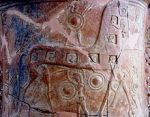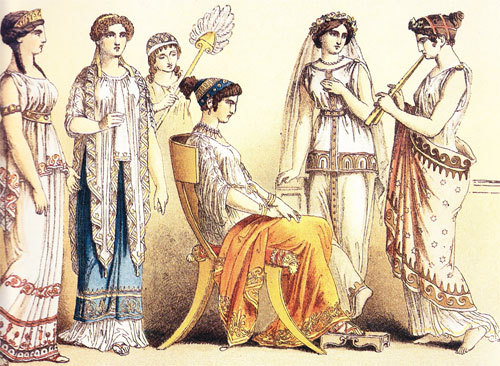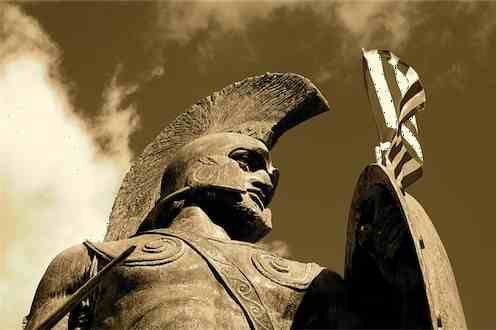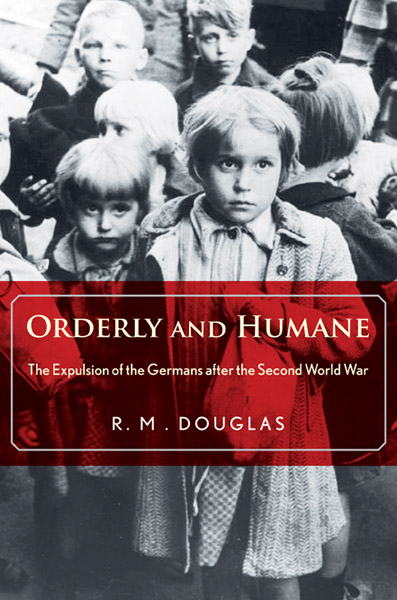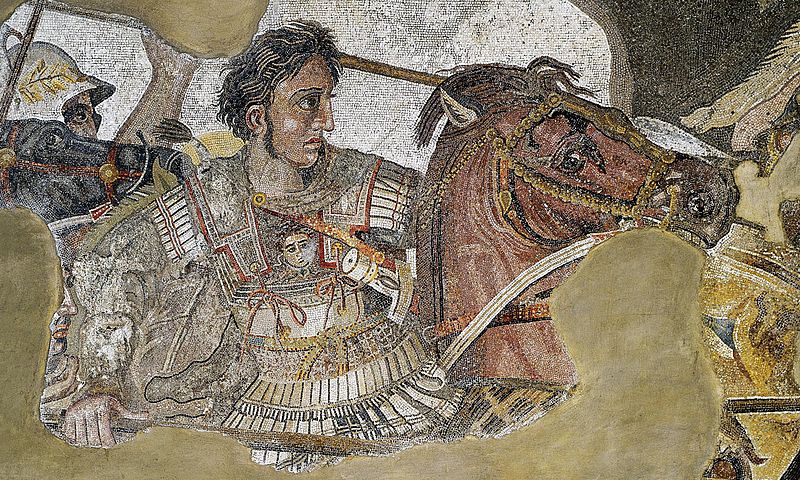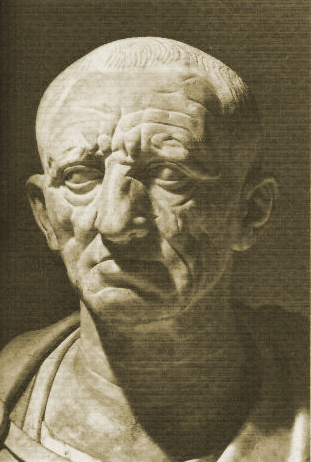The following is my abridgement of chapter 7 of William Pierce’s history of the white race, Who We Are:
Nordic Invasions 6,000 Years Ago Brought Masculine Spirit to Europe
Nordic Establish New Heartland in North
Language Gives Clues to Racial Roots
The Nordic subrace of the White, or European, race made its first appearance in Europe west of the Black Sea about 6,400 years ago. Before that the Nordics were concentrated in southern Russia and the eastern Ukraine, in the region north of the Black Sea and the Caspian Sea.
Skeletally they fall between the Cro-Magnon and Mediterranean extremes in several respects, but they present a unique set of skeletal characteristics of their own. They resemble the early Sumerians, but whether a close Sumerian-Nordic relationship actually exists remains unknown.
Ice Age Blondes. The earliest evidence on the Nordics tells us nothing about their pigmentation, and we can only infer that they were blondes, with light hair and skin and blue or gray eyes, from later evidence. We have good general reasons, however, for believing that all the peoples in Europe at the close of the Ice Age, except those on the southern border, were blondes.
Most of Europe was cold and cloudy at that time, with the surface receiving relatively little sunlight. Thus, the dark pigmentation that protects races which evolved in sunny climates from excessive ultraviolet radiation would have served no useful purpose for Paleolithic Europeans.
The Mediterraneans who invaded Europe in Neolithic times had presumably not been there long enough to lose their pigmentation by the time of the first Nordic incursion, and so there would have been a strong contrast in the appearance of the two subraces.
The Nordic homeland in southern Russia was wetter 7,000 years ago than it is today, and what is now arid steppe was then an area of mixed forest and grassland. The geologic evidence for this agrees well with the linguistic evidence.
Nordics were, above all else, warriors. Weapons were always the most prominent artifacts buried with them. Next to their weapons in their regard were their horses, and a dead warrior’s horse was often sacrificed and buried with him.
So, too, sometimes were their wives and their slaves. (The Hindu practice of suttee had its origin in the Nordic invasion of India 35 centuries ago.) Both slave sacrifice and the rich burials of some Nordics testify to a highly stratified or hierarchical social structure.
Conquest of Europe
They erupted into Old Europe in three major waves, beginning about 6,400 years ago and spanning sixteen centuries.
The Nordics cut through Old Europe like a hot knife through warm butter. Their first invasion wave carried them as far west as the Rhine. It was a relatively thin wave, however, and it left some areas of Old Europe more or less intact—notably, the western Ukraine—while other areas were totally disrupted and subjugated. Even in the latter areas—such as the region immediately west of the Black Sea, comprising present-day Romania, Bulgaria, Yugoslavia, and Hungary—the Nordics were not numerous enough to replace the Mediterranean population.
Instead, the conquering Nordics of the first wave reduced the Mediterraneans to helots and formed a ruling aristocracy over them. In some cases it was a purely male aristocracy, formed by Nordic warriors who were not accompanied by women and children of their own race but who instead took Mediterranean wives from the conquered areas. Everywhere the conquerors built citadels, usually hill forts, to anchor their conquests.
The Second Wave. The two races and their cultures coexisted in this way for more than 800 years. Then the second wave of Nordics came boiling out of their eastern homeland, about 5,400 years ago, and the last remnants of Old Europe were submerged. The warriors of this second wave brought their women with them, and the racial makeup of Europe began to change more profoundly.
Meanwhile, population pressure continued to build up back in the Nordic heartland. The third wave to hit Europe, between 5,000 and 4,800 years ago, was more massive than the first two, and the racial balance was shifted even further toward a Nordic predominance in many areas. In eastern Europe only Crete, the Cyclades, and Greece remained unaffected, with a relatively pure Mediterranean population.
The racial situation in Europe 4,800 years ago, then, was roughly as follows: the Mediterraneans were the principal population element in southwestern Europe and in the aforementioned areas of southeastern Europe. The Nordics were the principal element in southern Russia, from the Urals to the Dniester, which was the old Nordic homeland; and in north-central Europe, north to the Baltic and west to Jutland, which had not been heavily settled prior to the Nordic invasions.
The detailed racial distribution was actually more complex than the foregoing rough description indicates. Groups of Mediterraneans displaced from their original habitat by one or another of the Nordic waves later amalgamated with Nordics in areas well beyond the bounds of Old Europe. And, of course, there were still areas of predominant Cro-Magnon population, principally in the far north and the far west.
A New Heartland. The process of racial change begun by the Nordic invasions from the east continued long after the invasions ended. They were as decisive in shaping the racial destiny of Europe—and of the planet—as was the Mediterranean invasion of Cro-Magnon Europe 3,000 years earlier. They established a new Nordic heartland in northern Europe—a Nordic heartland from which new invasions would pour forth in the future, transforming southern Europe, as we shall see in future installments in this series.
Although we can decipher none of their religious inscriptions, it seems safe to assume that, like other soil-bound peoples, their religion was centered on the concept of fertility. Certainly, this is suggested by the abundance of female figurines, stylized vulva symbols, and other evidences of a flourishing fertility cult which have been unearthed by archaeologists along with other remnants of the Old European culture.
Warrior Religion. In contrast, the Battle-Axe People, the blond horsemen from the east, the conquerors of Old Europe, were a race on the move. Nordic, active, patriarchal, dominating, they too farmed and bred livestock; but they were far less soil-bound in their outlook than the Mediterraneans. Warriors, explorers, rulers, they were less concerned with the mysteries of plant and animal reproduction and more concerned with valor, honor, and authority. Their spiritual focus was upward and outward, toward the sky and far horizons, rather than downward toward the soil and inward toward their own bodily functions, as in the case of the Mediterraneans. Theirs was the religion of the Sky Father.
The religion of the Scandinavians until a few hundred years ago, when it was forcibly replaced by Christianity, had a pantheon divided into gods and goddesses belonging to two distinct groups, the Aesir and the Vanir. The principal gods among the Aesir—Odin, Thor, and Tyr—are associated with the sky and with manly activities. Both Odin and Tyr were, at different times, assigned the roles of Sky Father and of war god. Thor, the thunderer, was the god of the air, of lightning, and of defense against enemies.
The three principal Vanir—Njord, Frey, and Freya—are, on the other hand, associated with the earth and the sea, with fecundity, and with sexual pleasure. Njord is clearly a masculinized version of Nerthus, the Earth Mother. Frey and Freya personify the male and female sexual principles, respectively.
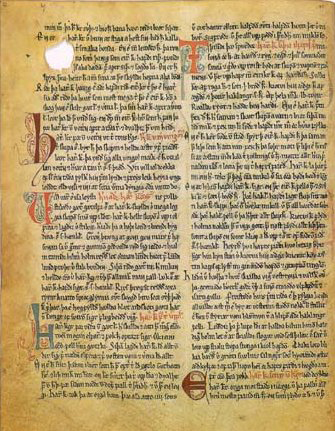 The Heimskringla, a semi-historical compendium of the lives of the Norse kings, written early in the thirteenth century by Snorri Sturlason, the great Icelandic poet and historian, begins with the Ynglingasaga, an almost wholly non-historical account of conflict between Aesir and Vanir. In Snorri’s scheme of things the Aesir were the biological ancestors of the Norse kings, and he interprets the racial memory of a long-ago migration of people in this light.
The Heimskringla, a semi-historical compendium of the lives of the Norse kings, written early in the thirteenth century by Snorri Sturlason, the great Icelandic poet and historian, begins with the Ynglingasaga, an almost wholly non-historical account of conflict between Aesir and Vanir. In Snorri’s scheme of things the Aesir were the biological ancestors of the Norse kings, and he interprets the racial memory of a long-ago migration of people in this light.
His account correctly places the ancestral home of the Aesir (i.e., of the people whose gods the Aesir were) in the region between the Black Sea and the Caspian Sea, but its geographical and historical details are not to be relied on.
Language and race
It is, of course, a shame that we have not a trace left of the languages spoken by the Cro-Magnon hunters of the Ice Age, and only a few undecipherable scraps left of the languages spoken (and, perhaps, written) by the Mediterranean peoples of Old Europe. Those languages of our White cousins and ancestors are lost to us forever. But the Nordic conquerors of Europe, in those long-ago invasions, though they thoroughly obliterated the indigenous languages of Europe, gave us something immensely valuable in return in the form of linguistic unity over a vast area of the earth’s surface.
It is because of this that 99 per cent of the White people on earth today speak languages which are closely related to one another. The psyche of a race, which is genetically determined, in turn determines the broad outlines of the forms taken by the race’s cultural developments, including language. And the structure of a people’s language certainly plays a major role in that people’s approach to the world around them—ultimately, in their manner and degree of success in coping with the world.
English, Swedish, and German may sound quite different to the ear, but they are, in fact, very close to one another; their structures are the same; they have words for the same concepts; they are used by peoples whose manner of thinking is the same. And they differ radically from any non-Indo-European language, such as Chinese, Hebrew, or Xhosa.
The earliest split of Proto-Indo-European was into a western (or centum) branch and an eastern (or satem) branch. To the western branch belong the Germanic, Celtic, Italic, and Greek languages; to the eastern branch the Baltic, Slavic, Iranian, and Indic languages. (The last two groups of languages are spoken by non-European peoples today, the consequence of prehistoric conquests by Nordics.)
After this initial splitting, further branching has occurred: Germanic has branched into the North Germanic languages (Icelandic, Faeroese, Danish, Norwegian, and Swedish) and the West Germanic languages (German, Dutch, Afrikaans, Flemish, Frisian, and English); Celtic has branched into Welsh, Breton, Irish Gaelic, and Scottish Gaelic; and Italic has branched into Portuguese, Spanish, Catalan, Provencal, French, Italian, Rhaeto-Romanic, Sardinian, and Romanian (to mention only extant languages).

